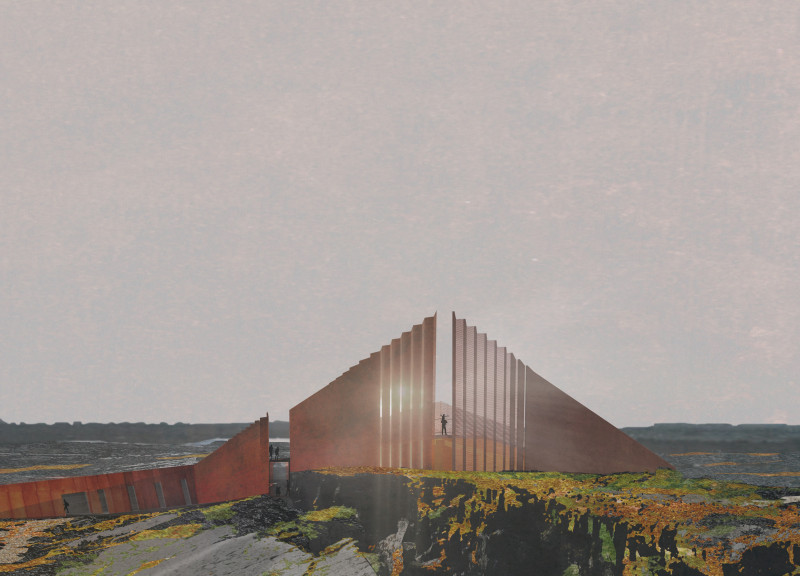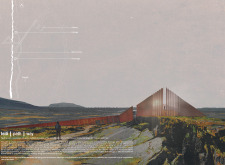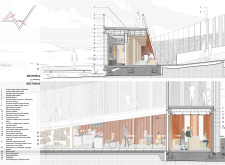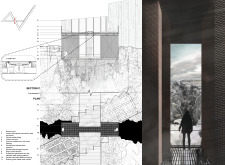5 key facts about this project
At its core, "Leið" represents a considered response to the natural topography, embodying the notion of journey as it guides visitors through a sequence of dynamic experiences. The design fosters an awareness of the geological forces at play, allowing for uninterrupted views of the rift's fissures and surrounding formations. The boardwalk gently rises and falls with the landscape, offering multiple vantage points while creating an instinctive dialogue between the built environment and its natural counterpart.
The function of "Leið" extends beyond mere transportation; it serves as a means to educate and connect. The architectural design includes specific zones for visitors, such as observation points and facilities for interaction, which enrich the overall experience. A dedicated visitor center enhances this educational aspect, providing displays and information about the unique geology of the area. Changing areas are incorporated seamlessly into the design, allowing visitors to transition comfortably between outdoor exploration and rest.
A distinctive feature of the project is its focus on sustainable practices. The choice of materials reflects a commitment to environmental consciousness, with an emphasis on utilizing locally sourced elements. The material palette includes Corten steel panels that develop a weathered aesthetic over time, reinforcing the rough beauty of the landscape while maintaining structural integrity. The use of pressure-treated wood for the decking ensures that the surfaces are both inviting and durable, prompting users to engage physically with the path. In addition, integrated hydronic radiant tubing provides warmth within the flooring, enhancing comfort during colder seasons.
The architectural design also incorporates seismic joints, acknowledging the geological instability of the region and ensuring the resilience of the structure. This thoughtful integration of engineering and design showcases a unique approach to addressing environmental challenges while maintaining aesthetic appeal. Moreover, the careful arrangement of elements allows for sightlines that direct the visitor's attention towards significant geological features, threading a narrative of movement and exploration throughout the space.
"Leið" stands out due to its ability to blend architecture with the natural environment in a way that is both functional and evocative. The elevated pathways encourage exploration and reflection, enhancing visitors' understanding of the geological landscape through direct engagement. Each detail, from the materials chosen to the structural layout, plays a crucial role in creating a cohesive experience that connects people to place.
By exploring the project presentation of "Leið," readers can gain deeper insights into the architectural plans, sections, designs, and ideas that inform this unique undertaking. This comprehensive analysis highlights the importance of thoughtful design in responding to both human needs and the surrounding environment, underscoring how architecture can foster a deeper appreciation of the natural world.


























